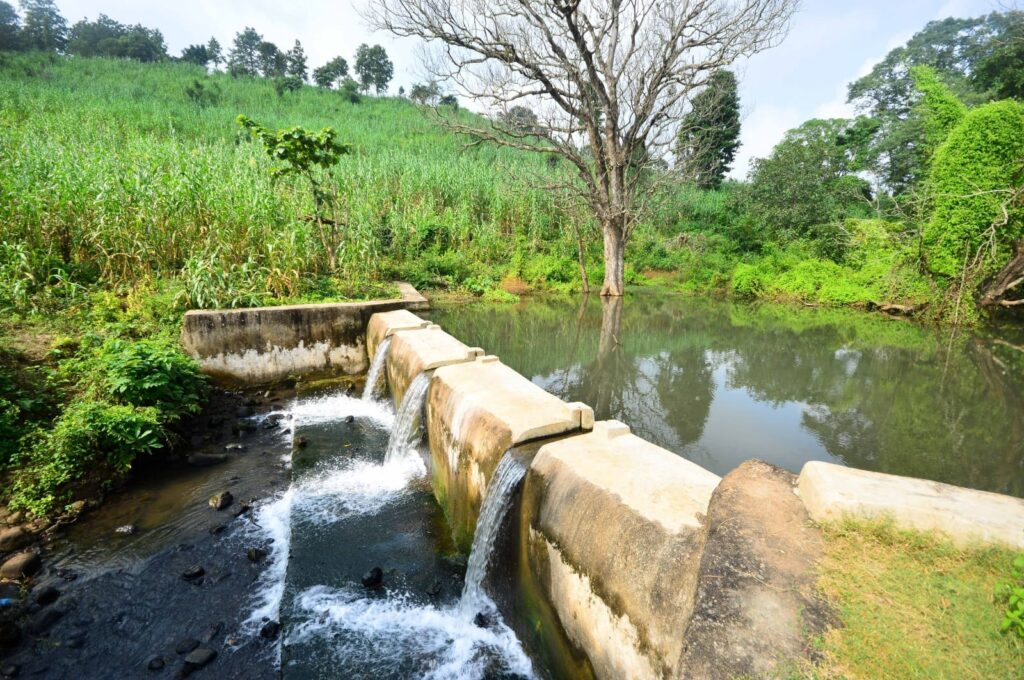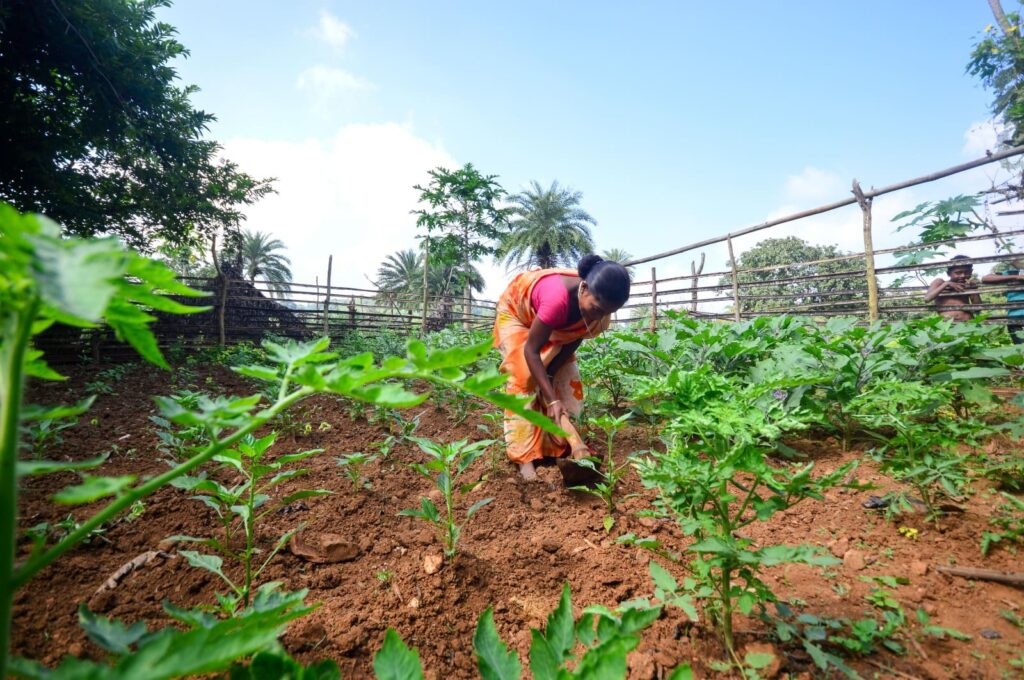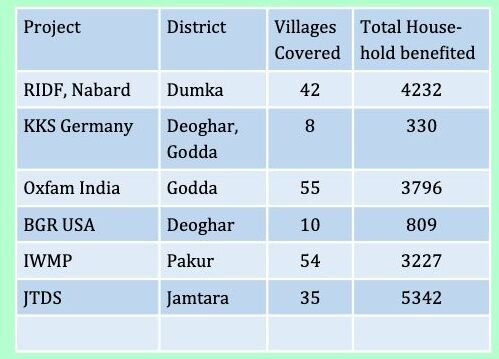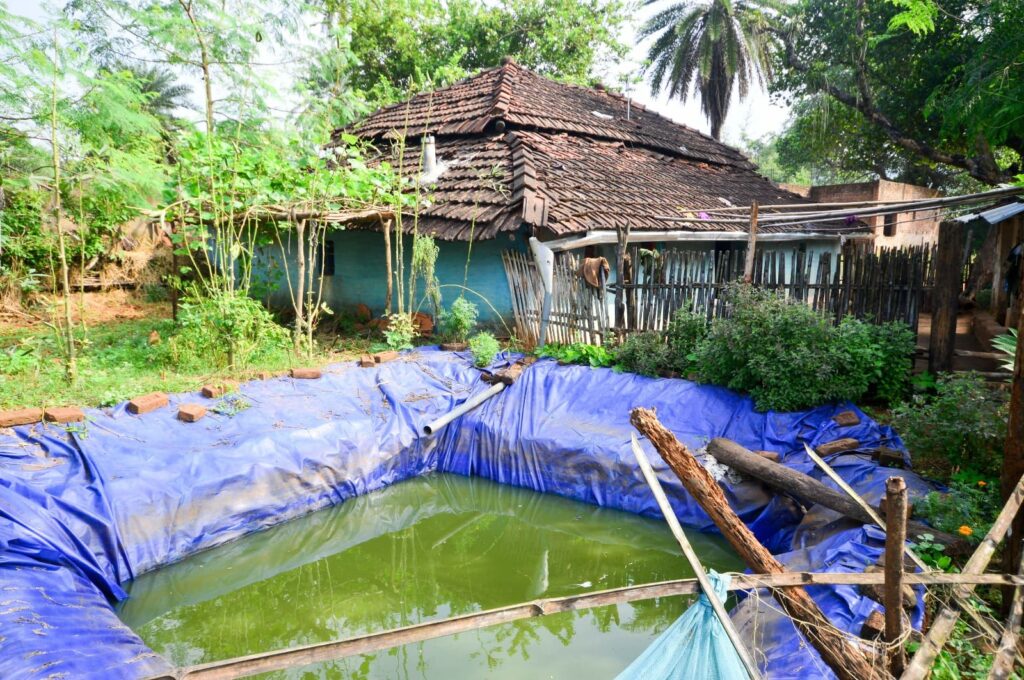Natural Resource Management
Natural Resource Management

Badlao Foundation's 40-Year Journey
Badlao Foundation brings 37 years of extensive experience in fostering diverse livelihood activities aimed at improving the living standards and income generation for rural and tribal households. With a focus on promoting sustainable agriculture, maximizing the utilization of non-timber forest produce, and implementing effective watershed management practices, the foundation plays a pivotal role in securing livelihoods within rural communities.
Recognizing the impact of climate change on people’s livelihoods, Badlao Foundation has undertaken efforts to raise awareness among communities. Initiatives such as organic farming, construction of vermin-compost pits, and awareness campaigns have been implemented to address the related challenges. The foundation encourages rural communities to adopt improved technologies that reduce emissions and promote sustainable practices. Introduction of solar technology and other eco-friendly solutions has further enhanced the adoption of alternative energy sources among rural populations.
Given that rural livelihood systems are intricately linked to land, water, and forests, the sustainable development of these precious resources becomes paramount. It has a direct bearing on local food security, addressing malnutrition, and ensuring an improved quality of life. Badlao Foundation adopts an integrated community development approach, recognizing the interdependence of these elements.
Santhal Pargana, with a population of nearly 7 million, comprises approximately 29% tribal communities and around 11% Dalit communities. Additionally, approximately 9% of the population, non-tribal and non-Dalit, faces the challenge of landlessness. Once owners of forests and agricultural lands, the tribal communities have faced immense resource loss and deprivation. Government acquisitions of forests and the division and degradation of agricultural lands have left them oppressed and marginalized, making even basic survival a significant luxury.
Badlao Foundation remains committed to its mission of empowering these resourceless communities, providing them with sustainable solutions and avenues for economic upliftment. By leveraging its extensive experience and adopting holistic approaches, the foundation strives to bring about transformative change and improve the lives of those living on the margins of society.
Badlao Foundation's Impact
Empowering Livelihoods and Alleviating Poverty in Santhal Pargana
Santhal Pargana faces significant poverty, with approximately 35% of its population living in absolute poverty, and nearly 20 lakh people falling below the poverty line (BPL). The region's widespread poverty stems from the longstanding mismanagement of sustainable livelihood development and food security. Recognizing these pressing issues, Badlao Foundation has taken decisive steps to address them, starting with the establishment of the Khadi Ashram at Kewatjali village, located approximately 5 km from our present headquarters in Mihijam. The ground floor of our organization's building houses a Khadi outlet, serving as a platform for the development of social entrepreneurs. Over time, our approach has evolved into an integrated community development model that prioritizes livelihood issues.

With our extensive experience in diverse livelihood activities, Badlao Foundation is dedicated to improving living standards and income generation for rural and tribal households. We emphasize the promotion of sustainable agriculture, maximum utilization of non-timber forest produce, and effective watershed management as essential components of securing sustainable livelihoods among the rural masses.
To preserve natural resources and ensure food security, organic farming plays a pivotal role in our initiatives. Badlao Foundation has undertaken significant efforts to procure organic compost manure pits in target villages, providing small and marginal farmers with cost-effective access to organic fertilizers. This approach not only helps restore the fertility of the land but also contributes to achieving food security in the region.
Moreover, Badlao Foundation recognizes the impact of climate change on livelihoods and has actively engaged rural communities in adopting improved technologies that reduce emissions. We have introduced solar technology and other eco-friendly alternatives, empowering rural populations to access sustainable and renewable sources of energy.
By combining our extensive experience, community-driven approaches, and sustainable practices, Badlao Foundation is committed to uplifting livelihoods and combating poverty in Santhal Pargana. We strive to create a more equitable and resilient future for the communities we serve, empowering them to thrive in the face of environmental and economic challenges.
Integrated Natural Resource Management (INRM) for Sustainability of Ecosystem, Generation of Livelihood and Food Security
Our work in this area is based on the assumption that integrated natural resource development, particularly in times of climate change, can be of maximum use if used in a judicious manner, which has the potential to generate equitable and sustainable economic growth along with eradicating mass poverty and food sufficiency in the designated regions.
Sectors of Intervention by Badlao Foundation:
- Strengthening forest based livelihoods through enabling access to natural resources and tenure security over forest land of the forest dependent communities.
- Addressing vulnerabilities among the Pahariya community through women-led market interventions in Jhar-khand, India (Pahariya Samridhi)
- Integrated Watershed Management Programme (IWMP)
- Jharkhand Tribal Empowerment & Livelihood Project
(JTELP) - Rural infrastructure Development Fund (RIDF)
- Strengthening of Tribal Organization to Food Security and Right (Aarho Johar)
- System of Rice Intensification (S.R.I) Project
INRM is a convergent programme aimed at synergy building among watershed community, productivity enhance-ment, employment generation, and enhancing food securi-ty.
Components of INRM:
- To dissipate soil and water erosion and surface run-off.
- To harvest/recycle surface runoff and rainwater.
- To enhance soil moisture regime/water holding capaci-ty.
- To promote sub-surface flow, base flow and ground water recharge.
- To harvest water for life-saving irrigation: To improve pril heath and productivity.
- To promote generation and gainful employment oppor-tunities.
- To maintain sustainability of ecosystem
Project wise coverage of villages and Beneficiary under INRM during 2010- 2023




